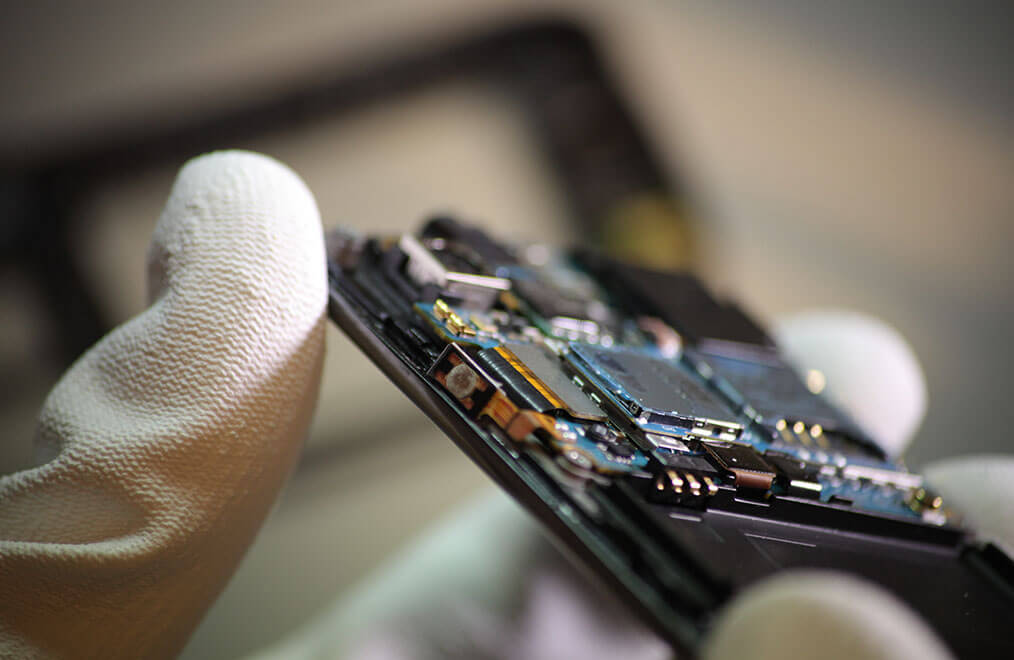This article originally appeared in the November 2018 issue of WiFi HiFi Magazine
They’re popping up everywhere. Little shops in strip or shopping malls that promise to save your smartphone from becoming a doorstop after you’ve dropped it for the umpteenth time, or following an accidental spill.
Device repair shops like UBreakiFix, Fonelab, and Mobike Klinik, employ “doctors” for your digital tech, who can seemingly breathe new life into an expensive smartphone suffering from every kind of ailment: not just cracked screens and water damage, but even dead batteries, defective charging ports, and more. Many offer not only repair services, but also services like data recovery. And most also sell accessories. There’s no better time to upsell a customer on a protective case or screen protector, after all, then after having just replaced a busted screen.
In most cases, an appointment isn’t needed. Walk in, plop your device down, and explain what has caused the panic. Basic fixes can be completed in under an hour. Cost depends on the quality of parts you choose, reputation of provider, and type of device. But it can range anywhere from $30 for a new battery, to $450 for an authentic Apple screen for an iPhone X.
Smartphone repair shops aren’t new. But now that customers are paying $1,000+ off-contract prices for premium devices, and we’re using our smartphones more than ever, they are seeing a surge. Business Insider reports that 45% of smartphones owners will, at one time or another, accidentally damage their devices. Thirty-eight per cent will drop them, 28% will drop them into liquid, and 8% will spill something on their device. Unlike other tech devices that we’d rather replace than repair once broken, smartphones are expensive, and we simply can’t live without them for even a day. Which means if something is wrong, customers are not only willing to pay to fix it, but they’ll want it done immediately.
Extended warranties like AppleCare+ offer some peace of mind. But fixes aren’t immediate. And the warranties don’t cover everything that could potentially go wrong, and only apply to newly-purchased devices.
During a visit to San Diego, CA for a trade show, I spotted a mobile phone repair van parked on the street beside a restaurant, pulling up to help a customer with a phone repair emergency. It seems silly, but the idea makes total sense. Imagine being at a conference in a different country or province, and your phone breaks. Can you wait until you get back home to fix it?
Where do you take your phone? That dark, dank basement where a man calling himself the iPhone Doctor promises to fix your phone in 10 minutes sounds tempting, as does that kiosk in the mall offering unbeatable pricing. But as with any industry, it’s buyer beware.
Alongside a dark underbelly to the world of mobile device repairs are trusted service providers. We spoke with a few of them, who offered advice, and peeled back the layers to help us understand how the smartphone repair industry really works.
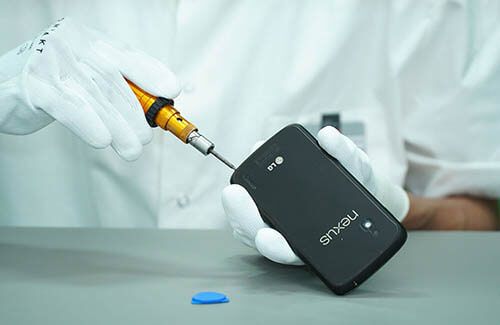
The Most Common Smartphone Repairs
First, why are customers visiting? If something happens that isn’t covered by a warranty (e.g. you spilled coffee on it), or your phone is out of its warranty period, you’ll need to contact the store where you bought it, manufacturer, or visit a third-party repair shop. Not surprisingly, the most common types of smartphone repairs are cracked screens and water damage.
Darren Lindwall, Owner of Vancouver-based BK Phone Repair, says 90% of his business is in fixing screens and batteries.
“I get tons of calls every day just asking ‘how much?’” he says. And I have to explain to them that there are different qualities of parts. Real parts, he says, are usually three times more expensive than a copy. With the iPhone 8, for example, the authentic screen is about $100, while the fake one is $30.
Pricing, overall, has gone up for fixes of the latest premium devices, which are thinner, and generally more difficult to open up because they use adhesives that require special tools to avoid damaging them, says Youssef Botros, National Training Manager for Mobile Klinik, which operates 32 mobile repair shops across Canada.
For more complex issues, Mobile Klinik offers a free diagnosis to determine what’s wrong with the device before pricing out a fix. They, like many other repair shops, can also provide a purchase price for buying the device if the customer doesn’t want to have it fixed. “There’s a pretty big market for buying phones,” says Botros.
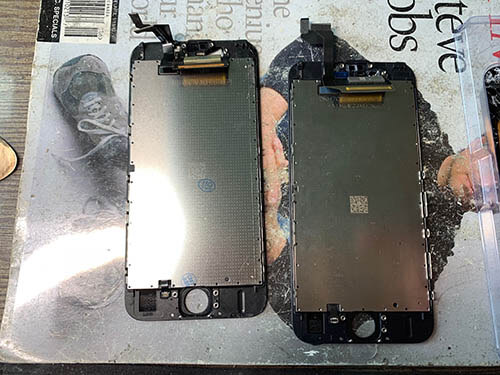
Most authentic smartphone replacement screens range from $100-$200, though it can be much higher for new devices.
Generic screens, however, aren’t all bad. Budget-conscious customers, those fixing a phone to re-sell or hand down to a teenager, or who break their screens frequently, might be OK with something that isn’t authentic. But it’s important to understand that there are different versions of generic, from crappy to Grade A premium. Knowing what you’re getting is partially about asking for transparency as well a customer’s trust in the repair shop, and the shop’s trust in its provider. Sometimes, says Lindwall, a generic screen might not fit right, or it’s a millimetre higher than the old screen. “Every week,” he adds, however, “they seem to get better.”
Check the screen after installation by running your fingers around the edges of where the screen meets the housing of the phone. Check pressure by tapping and pushing icons and the Home button, and plug it in to verify the charging port works.
Really bad fake screens, says Lindwall, can trigger random typing, or even cause your phone not to work at all. He’s seen a fake screen cause an iPhone to repeatedly select different keys when the passcode lock was on, permanently locking the user out of his device.
Beyond cheap fake screens, Lindwall warns that some of those too-good-to-be-true kiosks don’t put all of the parts back into the phone after doing something like replacing the screen because it takes too long. For instance, there’s a cover that holds the cable inside your phone. If you drop the phone, the connector could come off if the cover isn’t put back on, and you have to go back to the same shop to get it fixed. “Chances are they did it on purpose,” he claims, “just to get you back in to spend another $100.”
As an authorized Samsung repair shop, Lindwall only uses original Samsung parts. “That way, I know it isn’t going to fail, and it wasn’t built by some guy in his garage,” he says. And even with Apple devices, he always encourages customers to err on the side of caution and opt for the real screen, because he’s had too many bad experiences with OEM screens.
“I’d rather fix fewer phones with real parts than just offer a revolving door of crappy repairs that results in a bunch of angry customers,” he says. “You get what you pay for. It’s like going to a bad dentist.”
Botros says it isn’t just the glass screens that customers often need to replace, but also the glass backs of the latest premium phones. “It’s not metal anymore like an iPhone 6S. And that breaks pretty often.”

Batteries are another common replacement, and they usually cost around $50-$60.
As with a new screen, quality is critical. “I’d rather put a used battery into a MacBook then one you can buy from Amazon or China,” says Lindwall. While they can look authentic, he notes, you can never be sure.
Kelsea Weber, who handles Marketing Outreach for IFixit, an open source repair group that offers DIY kits for customers to handle their own basic repairs (more on them later), says during the height of “battery-gate” with Apple, IFixit couldn’t keep its battery kits on shelves. “Even though Apple was offering swaps, there was a backlog of people waiting for the repairs.”
Water damage is the third main area of repair. And Lindwall has been seeing a lot of supposedly waterproof devices come in with water damage.
“They might be waterproof when you buy it and take it out of the box,” he says, “but the first time you drop the phone…I have a client’s phone on my desk right now who went swimming with it and swore his friend said it was waterproof.”
What’s more, if you are not an authorized mobile shop and you repair a device that purports to be water-resistant, says Botros, you cannot guarantee that the device is water-resistant again. “There are always those kinds of complexities.”
Other types of common fixes aren’t even the fault of the customer. Lindwall has seen the same recurring issues with different phones. Every iPhone 6 and 6 Plus, he claims, has a chip that will fail eventually. With the iPhone 7 and 7 Plus, there’s a known audio problem whereby you can hear the person on the other end of a call, but they can’t hear you. “It’s just a matter of time before it happens,” he says. The iPhone X had a charging issue, though it has reportedly since been fixed via a software update. Botros says software issues sometimes arise, like a phone that keeps restarting, or won’t power up at all. Sometimes, the phone is too expensive to work on. But in many cases, the issue can be fixed, at the expense of the customer.
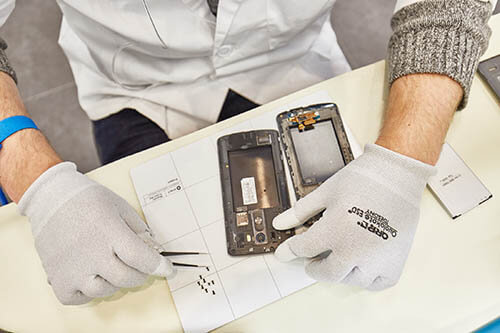
Beyond Repair
Phones can flatline, and simply be beyond repair. But even knowing this, a customer might still seek out a repair shop in hopes of retrieving data that was not backed up elsewhere.
A client of Lindwall’s had a phone that fell off a roller coaster. While it did need to be replaced, he was able to straighten it out, test it with new parts, and get the phone to boot up just long enough to retrieve important data.
Lindwall uses technicians from across Canada who can work with circuit boards. “Sometimes with water damage,” he says, “things get fried. As long as we can get power to the phone and get the circuit to work,” he says, they can usually get enough power to retrieve data before disposing of the device.
Mobile Klinik offers additional services like device unlocking, although carriers now offer that service for free, or aiding customers in transferring contacts from one device to another.
There are also upsell opportunities for protective accessories in repair shops. Lindwall says after showing customers his own device, which is housed in a bumper case with a glass screen protector, about half of them, often parents, leave with a new case.
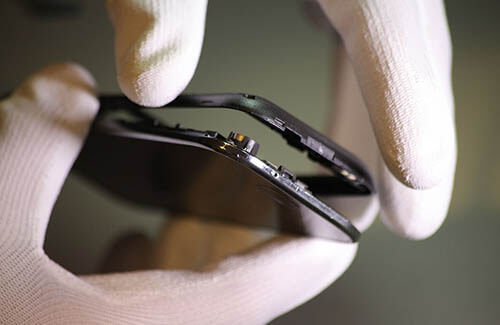
Do It Yourself?
If your phone falls into the toilet or pool, the first thing you should do is power it down, remove the battery, SIM card, and memory card, and place it in a bag of rice for 24 hours. The rice soaks up moisture, and if it’s done quickly enough, the phone could be restored to functional status.
IFixit kits encourage customers to do basic repairs themselves, and include all of the necessary tools and accessories for opening up smartphones, as well as GoPro cameras, Kindle Fires, iPads, and MacBook Pros (2012 models.) The kits come with detailed, step-by-step instructions, complemented by instructional videos and peer forums online.
“People are scared because they don’t know what lies inside their machines,” says Weber. “But then they have that ‘a ha’ moment when they open up the phone and say ‘oh, that’s it?’ They realize it’s not that crazy and they have what it takes.
“We want to change people’s perception on repair,” she adds. “If your 10-year-old can build a Millennium Falcon out of Legos, you can follow 20 steps to open your phone and change the battery or screen.”
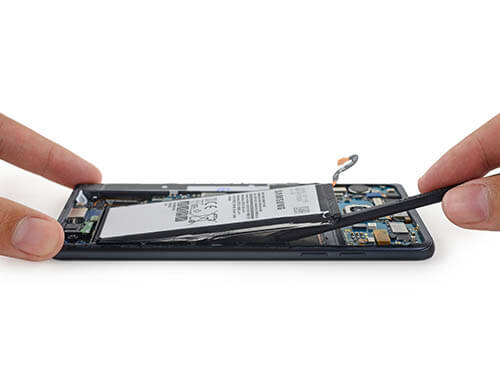
The only requirements, she insists, are some level of dexterity and good eyesight. IFixit customers span age groups and demographics, but usually fall into one of a few categories. First, there’s the person who wants to do it himself to “stick it to the man” and prove to himself that he can. Then, there’s the individual who doesn’t trust other people with his devices. “Security is one of the reasons we hear people don’t want to give their device in for repair,” says Weber. In other cases, some people simply can’t afford to go to the manufacturer, because they have an older, out-of-warranty device. And some don’t even have the option of a third-party repair shop. In Kansas, Weber notes as an example, there’s one Apple repair shop in the entire state.
What about cost? An IFixit kit for the iPhone 6S, which includes a 64-bit driver kit, anti-static wrist strap, small suction cup, 3x IFixit opening tool, various tweezers, and more, is $78. An assembly kit with an LCD screen for the iPhone 7 Plus: $116. That’s a hefty price tag for a kit you might only use once, and only marginally less than what you’d pay for a premium-grade generic screen that’s professionally installed. But it can save you a few bucks, and teach you a thing or two about how smartphones operate. All IFixit parts and tools are backed by a lifetime or “industry-leading” warranty, and all batteries and tools are hand-tested before they are shipped out to customers.
IFixit posts teardown videos of different devices on its website, giving each a repairability score, with “1” being the most difficult to repair and “10” being the easiest. iPhones, says Weber, typically score around 6 or 7, and are the easiest to open, with just two screws to pop open from the top. You don’t have to completely disassemble the phone to get to the battery. With a Samsung Galaxy phone, on the other hand, you have to flip it over and go from the back, disassembling everything to get to the battery and screen, which are on the front. Even the older models have glass on both the front and back longer, which makes them more fragile. Overall, she says the latest premium devices are getting more difficult to repair due to much thinner designs and new adhesives. IFixit offers a heating element tool that softens adhesive to make it easier to open.
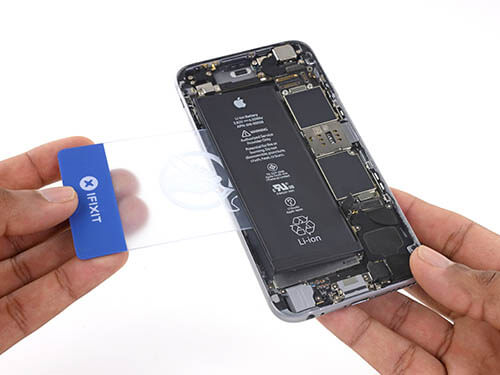
IFixit is advocating for the customer’s right to repair legislation in the U.S. (see Repair.org), asking for manufacturers to make original parts and repair resources available. “When you create a device that can’t be repaired,” says Weber of manufacturers, “you are creating a disposable product. Replacing a battery is more eco-friendly than getting a new phone. Batteries die. It should be easy to replace them.” With the Note7 battery issue, she says, Samsung could have potentially avoided a recall if customers could have replaced the faulty batteries themselves. “We have to make repair more accessible for people so they can choose to fix things instead of throwing them away and getting a new one.”
Tips for Finding a Repair Shop
As much as the promise of a quick and cheap phone fix sounds enticing, especially in a desperate time of need, heed with caution. If you decide to go the repair shop route, spend the extra time, and money, to find someone trusted and reputable.
Make sure they offer a warranty on their work; most places offer one-year, but others might do three or six months. Lindwall says he offers one year on authentic parts, but won’t warranty fake screens, as he simply can’t vouch for how they’ll work. Mobile Klinik offers a lifetime warranty on its parts and labour, unless the phone is water damaged. As long as the phone isn’t physically broken or tampered with in some way, customers can return to any Mobile Klinik location across the country to have a related after-service issue fixed for free should one arise.
Lindwall, who runs his shop from a closed off area of his home in a mixed residential building, does all of his repairs in front of his clients, while they wait. “I usually have 10 people sitting around my table, and we’re just having a conversation, and I explain everything as I go.” Sometimes people leave and come back if they have things to do. But repairs like replacing a screen on an iPhone 5S or 6S can be done in about 20 minutes.
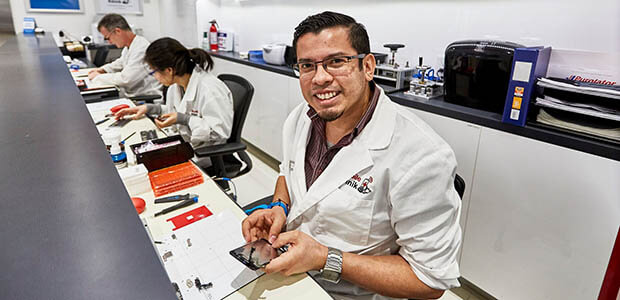
Mobile Klinik, which is an authorized service centre for Samsung, and does in-warranty work for the manufacturer as well, also does all of its repairs in front of customers.
Some repair shops, like Mobile Klinik, ask for a passcode so they can verify that the phone works after the repair is done. All of Mobile Klinik’s trained technicians are bonded, and the company offers a data security guarantee. “You have to make sure your information is protected and secured,” says Botros.
If you aren’t comfortable with them logging into your device while you aren’t there, ask them to verify everything in your presence once you return to pick it up.
Read online reviews before committing to a shop. Are there are a number of angry and unhappy customers? Steer clear. Ask your carrier or the manufacturer for a referral to a trusted partner, or look for a logo in the store that confirms they’re an authorized service centre. Keep in mind, though, that authorized repair shops might not be able to fix everything. Apple, for example, only allows its authorized repair shops to fix iPhone screens and batteries. So a shop might forego authorization in order to fix issues authorized repair shops can’t, yet still be highly rated for their out-of-warranty work.
Don’t be lured in by low prices. If the price seems too good to be true, it probably is. A smartphone has intricate electrical components, and it’s a device you rely on daily. It hurts to fork over a lot of dough for a screen, or a repaired charging port, but it’s better than paying a smaller fee for a faulty repair, or cheap components.
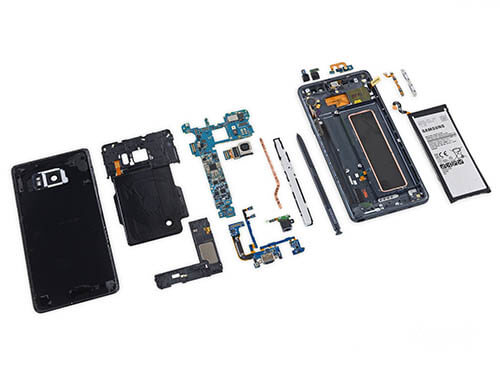
Bottom Line
The inspiration for this article arose when, a few months ago, I dropped my iPhone 6S onto the hard pavement. It wasn’t the first time it’s happened. And I have a protective case and screen protector. But the phone fell in just the perfect way for the screen to completely shatter. I struggled with what to do. Do I revert to using my 5S? Find a good deal on a new iPhone? Or pay for a new screen?
I opted to visit a local repair shop, DeviceCare+, and have a new screen put on. The salesperson was helpful, and explained the difference between the authentic screen and the “premium quality” generic. I moved forward with a $90 premium generic screen, with the intention of eventually selling the phone second hand when I upgrade. My phone was ready for pick-up in under an hour, and a month later, it still works fine, though sometimes it seems like the screen does not accurately sense my finger taps around the top left and right corners.
Despite our best efforts, and sometimes due to issues completely beyond our control, phones will have issues. And they do break. We never want to visit a mobile repair shop. But at some point through the life of your phone, especially if you keep it beyond two years, you will have to resuscitate it in some way.
“People say it’s like therapy,” says Lindwall. “I have clients who I’ve been seeing for 10 years. They see me once a year, and they’ve seen my kids grow up and I’ve seen theirs.”
Manufacturers, says Weber, often discourage repair by charging a lot for parts, or making the parts unavailable. “But you put a new battery in your car, or new tires,” she says. “Doing repairs should be seen as a part of what you do to make your stuff last longer.”
Steps to Avoid Having to Visit a Repair Shop
Some issues can’t be avoided, such as a defective part, or a dead battery. But when it comes to some of the most common repairs, including cracked screens and wet devices, there are preventative measures you can take.
First, get a protective case that is designed to take the impact of a fall. If you work outdoors, look for something rugged with several layers of protection. But even if it’s just for everyday use, there are plenty of fashion-forward cases that offer great protection. Steer clear of discount store cases with cool and funky designs that are nothing more than stylish wallpaper for an expensive phone.
In addition to a protective case, install a screen protector at the time of purchase. It’s far easier (and less expensive) to replace a protector than it is a screen. And latest versions, made from tempered glass or even liquid, are much easier to put on.
If your device falls into the pool or toilet, as mentioned in the main article, try the old bag of rice trick. It really can work.
If you decide it’s time to upgrade, note that you can still get good money for a premium smartphone second-hand, so it might be worth fixing anyway. A used iPhone 6 can go for as much as $300 on sites like Letgo and Kijiji. (Be transparent in your listing if the screen, or other part, has been replaced.) When Apple launched the iPhone 7 last October, sales of second-hand older iPhones rose by an average of 20% on the buy/sell site Kijiji, while searches for used iPhones jumped by an average of 50%. And according to a study by eBay, an iPhone was bought and sold in Canada every 10 minutes, contracting to every five minutes just after the iPhone 7 launch. The average Canadian, according to Kijiji’s annual Second-Hand Economy Index in 2017, earns $1,037 by selling their old devices second hand.
Is Manufacturer/Carrier Extended Device Care Worth It?
A device care program with the manufacturer or carrier can provide added peace-of-mind. But is it worth it?
AppleCare+, available for all iPhones, varies in pricing depending on the device, but includes an additional year of coverage beyond the standard one-year limited warranty. It offers hardware repairs, 90 days of complimentary support, 24/7 priority access to Apple experts via chat or iPhone, express replacement services, software support, and coverage for up to two incidents of accidental damage. However, each incident is subject to an additional service fee: $39 for screen damage, and $129 for other types of damage. Hardware coverage includes not only the iPhone itself, but also the battery, as well as included accessories, like earphones.
On the one hand, you’re guaranteed to get authentic Apple parts, or even a brand new device. However, there are limitations. If the damage to your phone goes beyond just a crack in the screen, such as if there’s a dent or bend in the enclosure, Apple will not fix it under the $39 service fee. When factoring in the price of AppleCare+, along with the service fee, and guessing you’ll damage the device once during the few years you own it, having a respected repair shop fix it might be more cost effective, even if you’re hit with a $100-$200 fee all at once. You’ll likely get the phone back quicker than you would when sending it to Apple, too.
For Android devices, carriers like Telus offer programs like Telus Device Care. A extra $9/mo. tacked onto your bill affords another year of warranty on top of the included year, allowing you to bypass the standard repair process, have a replacement device sent to you the next business day while you wait for yours to be fixed, and up to two incidents of accidental damage, liquid damage, or manufacturer defects (after the one-year period expires.)
But like with AppleCare+, you still have to pay a small service replacement fee that’s anywhere from $25-$250, depending on the device tier. Which means a cracked screen within two years would cost at least $241 ($9/mo. for 24 months plus the lowest cost service replacement fee). If you were to crack your phone’s screen once, and drop it in the toilet another, however, you might come out ahead, especially since the service replacement fee is dependent on the device you own, not the specific type of damage. As with any type of “insurance,” it’s a matter of hedging your bets.
One thing to note is that a company like Apple will likely wipe the device before a repair in order to protect it from a data breach, which requires you to back up your phone before you send it in. Third-party shops typically won’t do that, though security worries could arise if you have sensitive content on the phone.
Even though having a device repaired through an extended warranty program might take longer, if you choose to repair an in-warranty device at a third-party shop to save time, it could void your warranty for whatever time you have left on it. If you think timing will be an issue, then, it might make more sense to forego the extended warranty and seek out a trusted repair shop to keep on speed dial.





